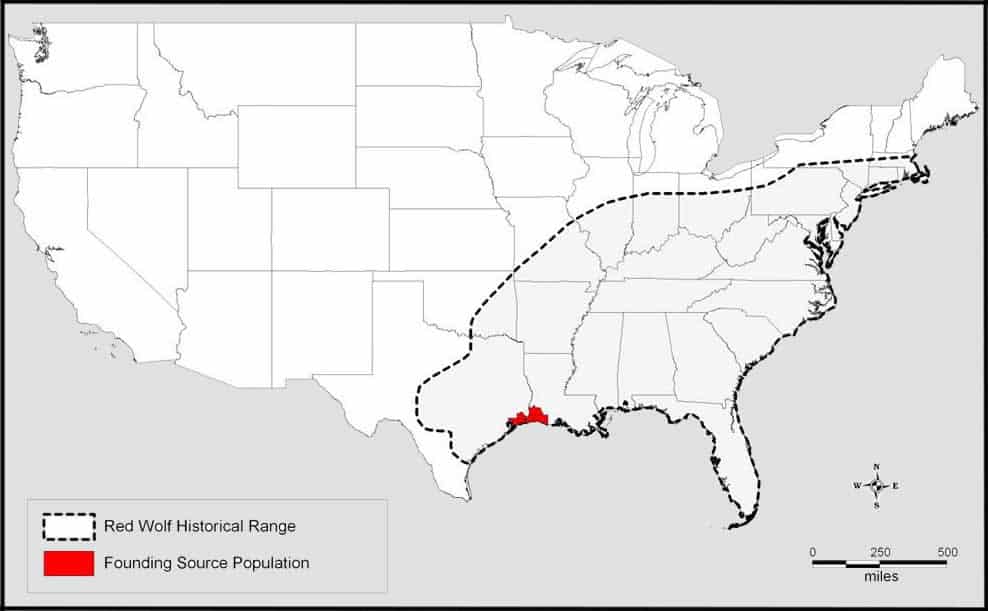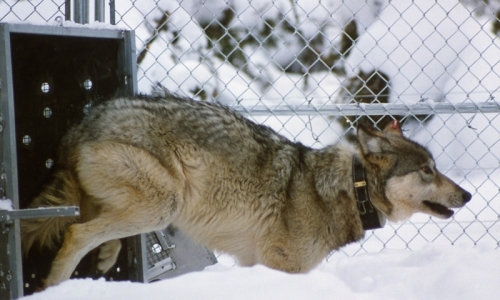Point
Arena Mountain Beaver (Aplodontia rufa nigra)
by Laurence Kuo
Summarize
Description and Ecology of Organism
Point Arena
Mountain Beaver (Aplodontia rufa nigra, figure 1) is listed as endangered species
since December 12, 1991. Mountain
beavers are the only extant member of the family Aplodontidae, and are
considered the most primitive living rodents. The mountain beaver (Aplodomtia rufa) has
overlap characteristics of the Point Arena (Aplodontia nigra). For this case,
the specie name was later refined to as Aplodontia rufa nigra. The first
classification of the mountain beaver came from the journals of Lewis and Clark
in 1805.
 |
Point Arena Mountain Beaver
|
The mountain
beaver is like a combination of “overgrown pocket gopher and a
muskrat
without a tail.” An average mountain beaver is about 30.5 centimeters long and
weighs about 2 to 4 pounds. The mountain beaver has wide yet flat skull,
especially near the eye socket isa. They have long whiskers on the nose with
small eyes and ears. There is a patch of white hair near the ears. They have
short equal limbs with curved claws. Most importantly, mountain beaver have a
unique black coloration. It is also one of the smallest species in California (Recovery
Plan. Pg. 1).
Geographic and
Population Changes
The Point
Arena mountain beaver is most found in the western Mendocino County. There are
seven subspecies of mountain beaver like to perch in cool areas, and moist environment.
Most of these subspecies can be found along the Pacific Coast of Northern
America, southern British Columbia to Point Reyes, California and Sierra Nevada
Ranges. The Point Arena Mountain Beaver is found along the northern coast of
California. The size of the total population is estimates to be 200 to 500
animals (Recovery Plan. Pg. 2).
Mountain
Beaver live in underground burrow systems (figure 2) with moist climate as well
as well-drained soil. Mountain beaver lives depended on a large amount of lush
vegetation for survival. Historically, mountain beaver is found in forested
areas. But because of the development of agriculture, the beaver population has
been changed. They are now found in many agricultural areas, especially the
area with cattle gazing. As of today, mountain beaver can no longer be found in
forest setting. Areas such as Mallo Pass Creek, Alder Creek, and Middle Brush
Creek (figure 3) has many openings underground that can leads to where the
mountain beaver lives. A recent discovered beaver population was located along
side of the Garcia River where there’s vegetation system dominated by cow
parsnip, stinging nettle, and California blackberry.
 |
Figure 2. Burrow
|
 |
Figure 3. Habitat
http://g2.travel.ru/g2/main.php?g2_view=core.DownloadItem&g2_itemId=45479&g2_serialNumber=1
|
In general,
areas with largest number of plant species correlate with the number of
mountain beaver activities. Many of the mountain beaver can be found with areas
that have extensive underground burrow systems with numerous openings (Recovery
Plan. Pg. 5). Research indicated per animal, there are 5 to 10 burrows openings
that they will use to connect them between the underground and the outside
world. Mountain beavers spend about 75% of their time in their nest chamber.
Mountain beaver are considered a neat creature because they like to keep their
tunnels clean and free of debris (Recovery Plan. Pg. 9).
Listing
Date and Type of Listing
The mountain
beaver was listed under the ESA on December 12, 1991, as an endangered species.
The mountain beaver was listed as endangered since 1991, the status never
changed. It is considered one of the highly priority species. The beaver are
mainly found in California and Nevada (Recovery Plan. Pg. 30).
Cause of
listing and Main threats to its continued existence
The factors that
cause Mountain beaver became endangered such as in urban development might one
of reasons causes the beaver being endangered (Recovery Plan. Pg. 22). The
increasing number of human disturbance in the environment contributed to the
decrease of the mountain beaver’s population. Many of the households may have
pets that walk around the area where the beavers located at and catches these poor
beavers. Since these beaver reproductive rates are very low, they cannot
produce the new population fast enough to replace the dead ones. Many of these
known areas are home to the mountain beaver have been being commercially housing
development. More housing means more people will occupy there, it became an
additional threat to the beaver population. Also, pest control of these agricultural
systems is an ongoing threat to the mountain beaver (Recovery Plan. Pg. 25).
Many of these maintenance workers place poison bait and traps out to kill what
they thinks are gophers, as mountain beaver do have gopher’s characteristics.
These workers can easily make mistakes to kill them. These isolated mountain
beavers are highly vulnerable to these poison and lethal chemicals. Another
reason why the mountain beavers are endangered is because they have infections
and intestinal diseases such as tapeworms and other parasites.
Recovery
Plans
The Recovery
Plans for the species was approved on June 02, 1998. There is detail
information
that is used as recovery criteria for recovering the species (Recovery Plan. Pg.
33).
Recovery
Criteria:
a. At least 16
populations need to be protected from human disturbance.
b. Develop an
acceptable population-monitoring program to ensure all 16 populations are
stable.
c. Determine
the amount of additional habitat needed for population interconnectivity.
d. The
insurance of sufficient informations must be provided for the subspecies
habitat management and life history of adaptive management for these
populations.
e. The
populations should have a mean density of at least 4 point per hectare to
insure health and stable habitat.
Action Plans:
1. Protect
existing mountain beaver populations. Land acquisitions: Plans to protect the
areas where these mountain beaver are located in. These land protection should
be based on the actual size of their populations. This plan should insure
protection from outside disturbance.
Develop plans
to identify and eliminate the threats of the mountain beaver population. There
should be a management plans that do research and monitor the population.
Develop guidelines on how to protect the populations (Recovery Plan. Pg. 36).
2. Survey to
locate new populations. Plans to develop survey protocol to identify suitable
habitat for the mountain beaver. Use survey to find additional land for the
population (Pg. 37).
3. Conduct
research on Point Arena mountain beaver. Since there are limited information
and research on the mountain beaver, more research is necessary in determine
the biological or ecological profile of the mountain beaver. Start a library
filled with information and books on mountain beaver (Recovery Plan. Pg. 39).
4. Restore the
Point Arena mountain beaver to suitable habitat. If no new suitable areas can
be found for the mountain beaver, it is necessary to restore the current known
area into a suitable environment for the beaver (Recovery Plan. Pg. 41).
Objective to
be met:
The estimated
date for down listing to threatened status for the Point Arena mountain beaver
is in 2015 and the date for delisting is by 2025.
Implementation
Progress:
• The plans to
protect existing populations are currently still ongoing. BLM has partially
installed protective fencing around Mud Flat area in 2008.
• Develop and
implement management guidelines. In 2002, CDPR developed a management plan. In
2006, BLM developed an interim management plan for Stometta Public Lands. In
2004, FWS developed standard protective measures to preclude take on private
lands.
• Plans to
identify habitat for restoration and develop restoration strategies are still
ongoing. It has not been started yet.
• In 2007, the
U.S. Fish and Wildlife Services developed the monitoring protocol but has not
started in conducting qualitative monitoring of the populations. This project
is currently ongoing.
• In 2008, the
U.S. Fish and Wildlife Services developed a survey protocol and completed the
task of identifying suitable habitat for surveying.
• In 2009, an
outreach effort to obtain access to private lands was initiated.
• In 2000, the
project to design studies to gather biological ecological data was initiated.
In 2004 - 2008, research conducted to collect data on home range breeding
season dates, and den site characteristics.
• In 2008, the
plans to conduct genetic analyses started. Rangewide of samples were collected.
A study was conducted from these samples. This plan was completed in 2011.
• Many of the
plans that was implemented still needs ongoing actions and effort to complete.
Many of these tasks are hard and require many help. It will take times. And
hopefully by 2015, the Point Arena Mountain Beaver can be delisted as
endangered.
Works
Cited:
Point Arena
Mountain Beaver Aplodontia rufa nigra (Rafinesque) Recovery Plan. (1998, June
2). Recovery Plan Action Status. Retrieved May 14, 2014, from
http://ecos.fws.gov/roar/pub/planImplementationStatus.action? documentId=400328&entityId=49
 source
source






















